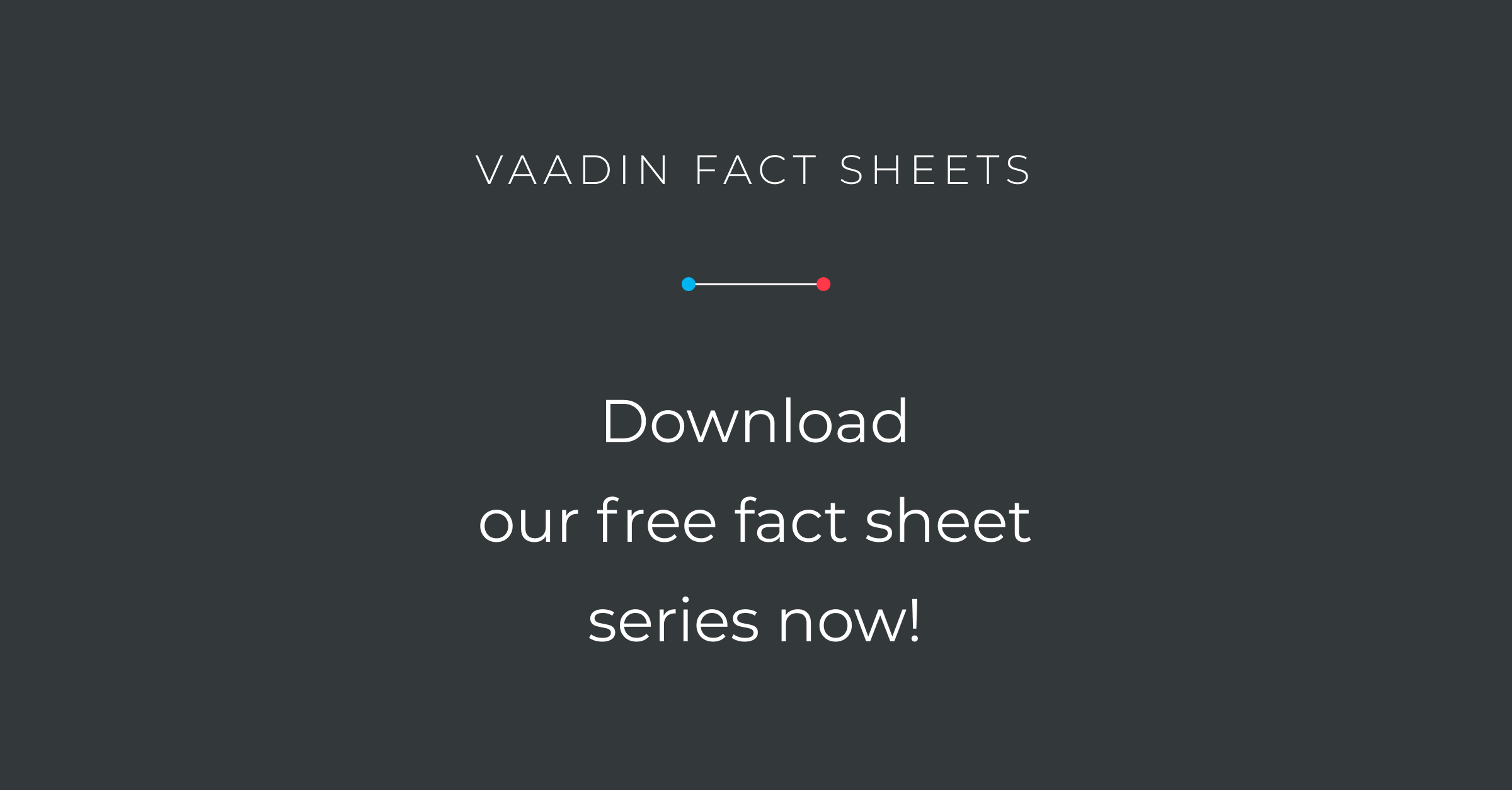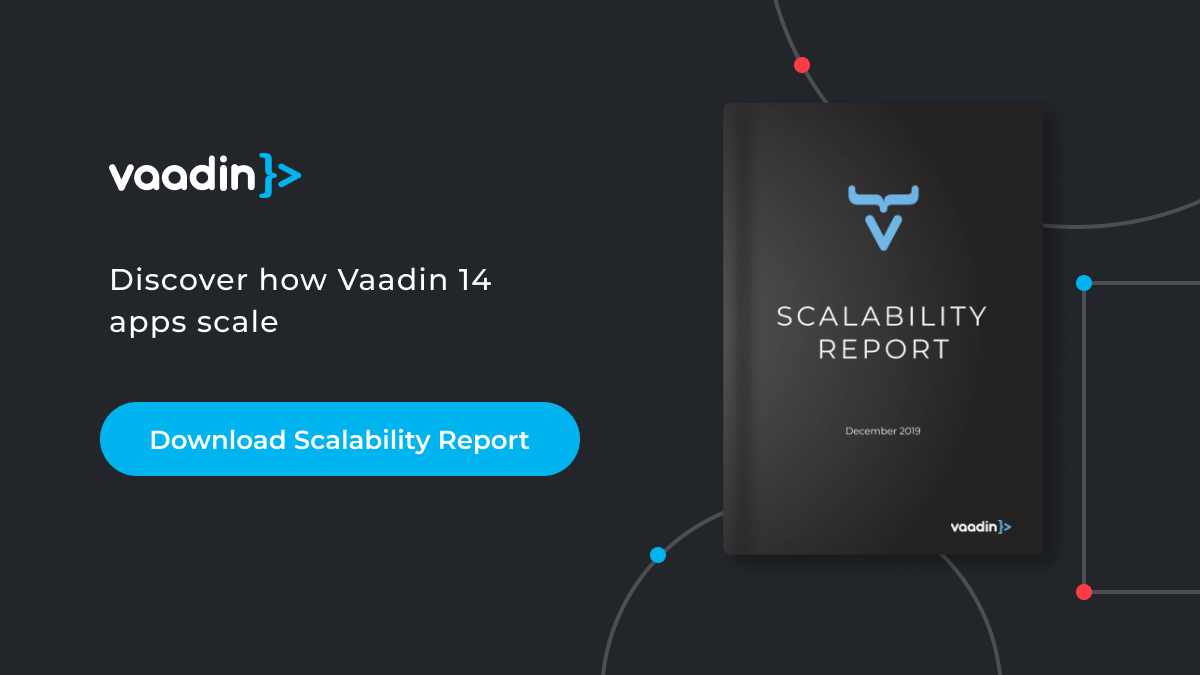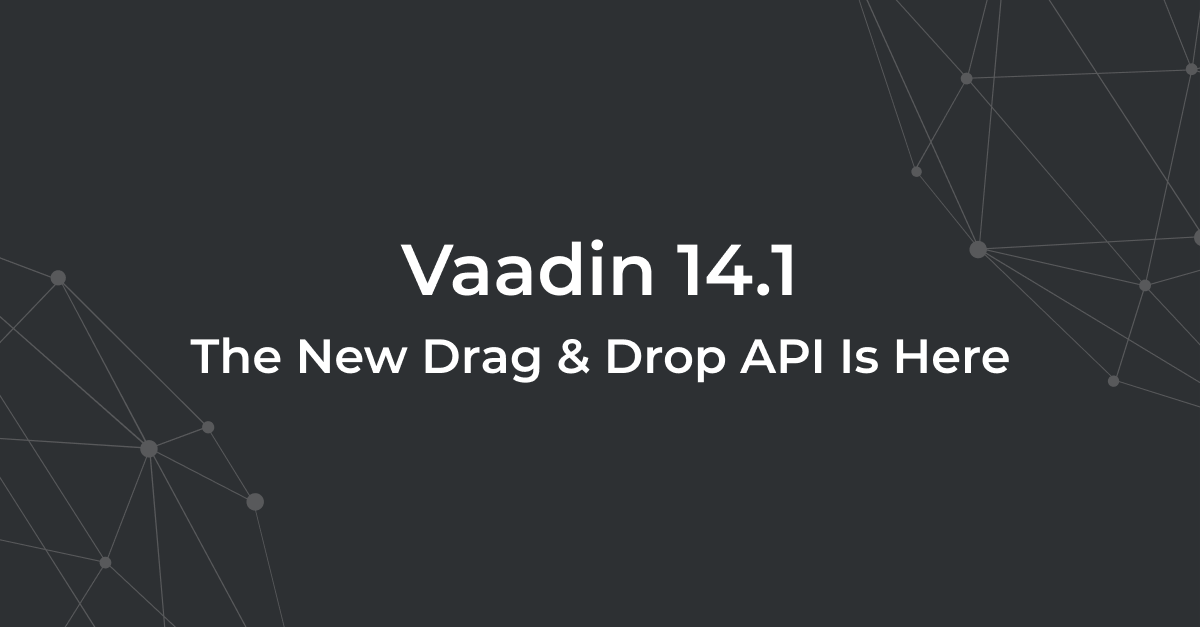Tag: Vaadin-14

A new series of fact sheets on Vaadin and its features
It’s been almost 20 years since Vaadin began helping developers build performant, user-first Java web applications. Things have changed a lot since then. To give new (and returning) users an overview of Vaadin’s features, we are releasing a series of free fact sheets outlining the different parts ...

Improving the developer experience for Java developers
The highlight of the recent Vaadin 15 release is the new capability to write UIs using TypeScript on the client side. Notwithstanding this, most of our recent effort has in fact gone into adding new value for Java-based UI development. These improvements target the upcoming minor releases of Vaadin ...

The Vaadin 14 scalability report is out now
If you're building an app for a large audience, you want to make sure Vaadin is able to handle the intended load before you start to build the app. We're happy to announce the new scalability report for Vaadin 14. It covers aspects such as: Memory and CPU usage per session Peak concurrent users for ...

New drag and drop API and more in Vaadin 14.1
Vaadin 14.1 brings a new drag and drop API, new components, a faster development-mode build, and a lot more. The generic drag and drop API The new drag and drop API allows you to turn any UI component into a draggable component or one capable of receiving dropped components. To make a component: ...

Bower and npm in Vaadin 14+
Starting with Vaadin 14, we use npm instead of Bower. Why are we doing this? What does this mean for you? And what is the future of existing components in Vaadin that are using Bower? The migration from Bower is a must, this is old news: Why Bower or npm? Both Bower and npm are dependency ...



